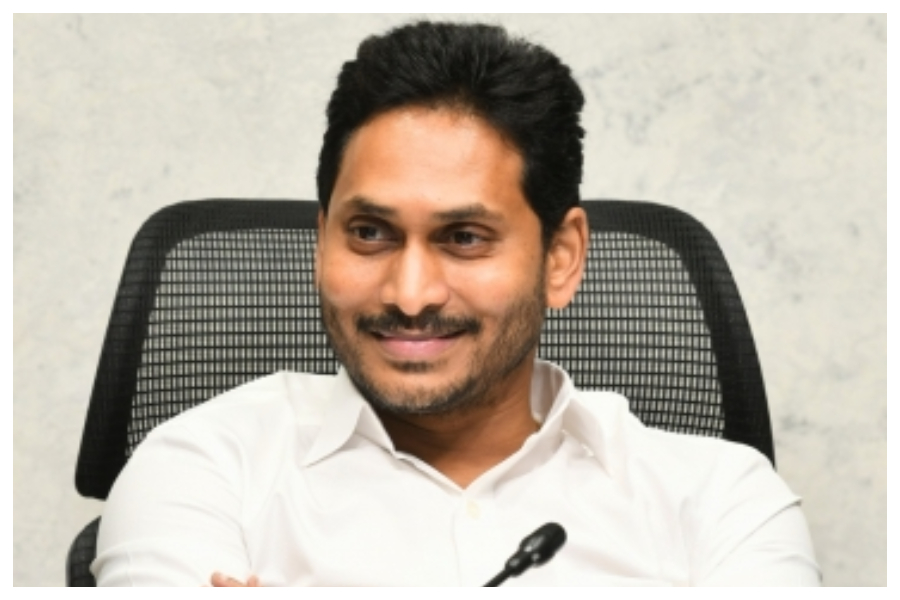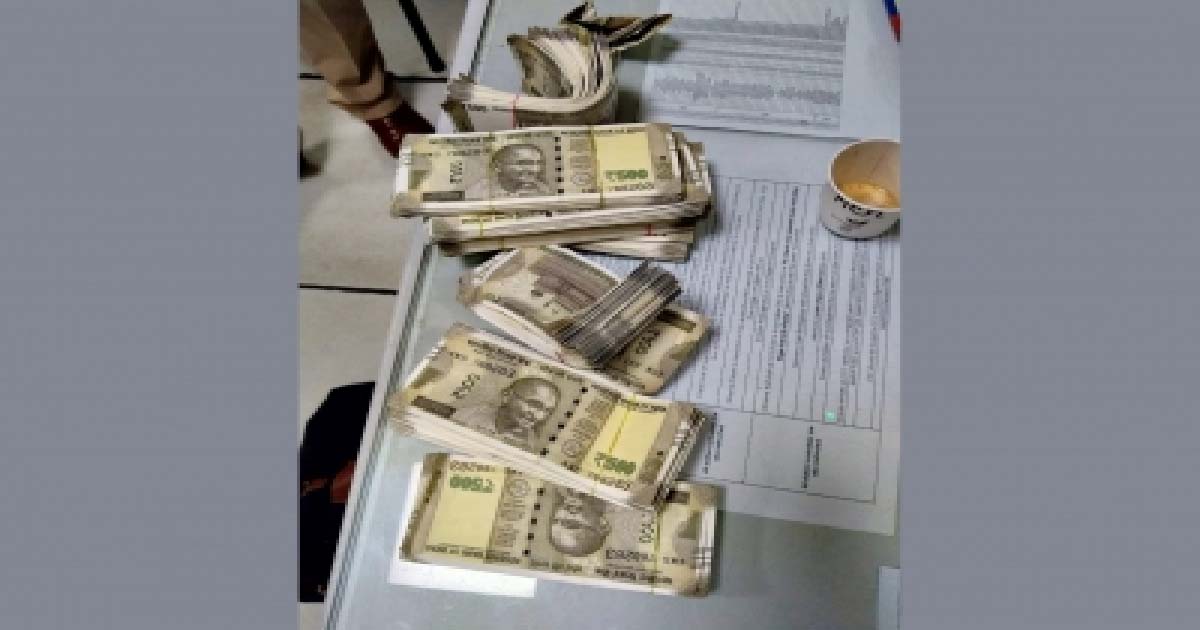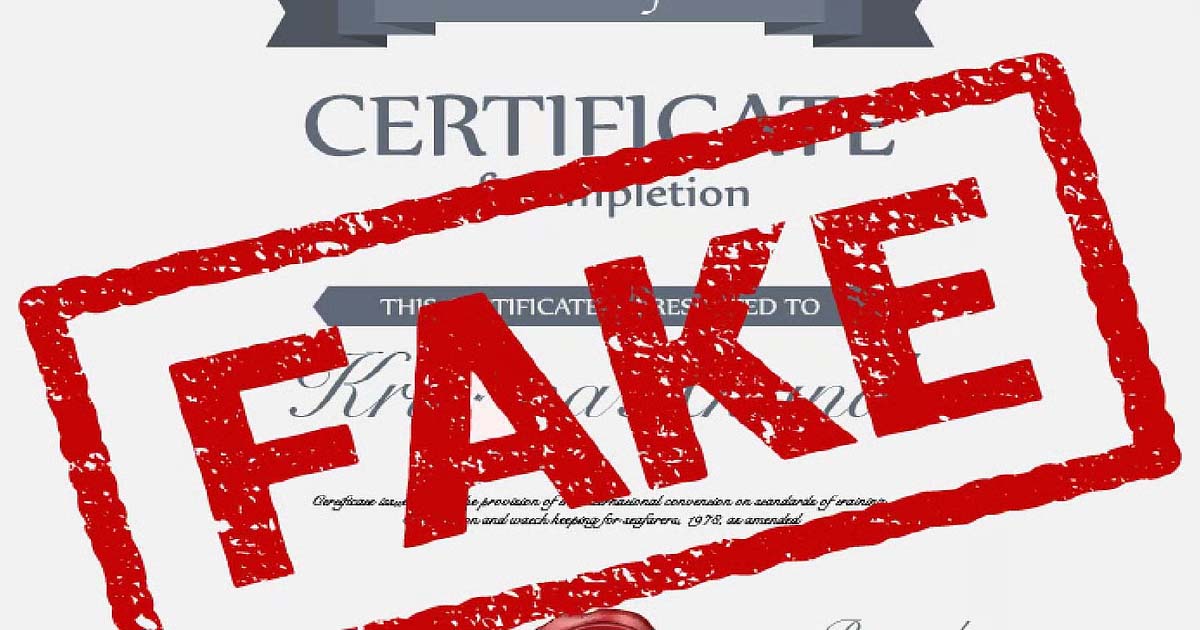National News
25 members of Jagan Reddy’s revamped Cabinet take oath

Andhra Pradesh Chief Minister Y.S. Jagan Mohan Reddy has reconstituted his Cabinet with all 25 ministers taking oath on Monday.
Governor Biswa Bhusan Harichandan administered the oath of office and secrecy to members of the revamped Cabinet at a ceremony held near the State Secretariat and attended by leaders and workers of YSR Congress Party (YSRCP) and senior officials.
Eleven of those who took oath have been part of the earlier Cabinet since June 2019, while the remaining are new faces.
Ambati Rambabu was the first to take oath.
Adimalupu Suresh, Usha Sricharanan and Peddireddy Ramachandrareddy took oath in English while all others completed the formalities in Telugu.
Fourteen new ministers are Dharmana Prasada Rao, P. Rajanna Dora, Gudivada Amarnath, Buddi Muthyala Naidu, Dadishetti Raja, Karumuri Nageswararao, Kittu Satyanarayana, Jogi Ramesh, Ambati Rambabu, Meraga Nagarjuna, Vidadala Rajini, Kakani Govardhanreddy, Roja K. Selvamani and Usha Sricharan.
Botsa Satyanarayana, Peddireddy Ramachandrareddy, Narayanaswamy, Buggana Rajendranath, Gummanooru Jayaram, Sidiri Appalaraju, Pinipe Vishwaroopam, Cheluboina Venugopalakrishna, Taneti Vanitha, Amjad Basha and Adimalupu Suresh had served as ministers in previous Cabinet.
After taking oath, Gudivada Amarnath and Jogi Ramesh knelt down before Jagan Reddy to thank him.
Actor politician R.K. Roja and other first-time women ministers V. Rajini and Usha Sricharan touched the Chief Minister’s feet while the latter blessed them.
There were loud cheers by supporters of the ministers when their names were announced for swearing-in.
While constituting his first Cabinet in June 2019, Jagan Reddy had promised to revamp it halfway through his tenure.
All 24 ministers had submitted their resignations to the chief minister on April 7 to enable him to reconstitute the Cabinet.
There was one vacancy due to the demise of Mekapati Goutham Reddy in February.
The Chief Minister had told the Cabinet meeting that the dropped ministers will be given responsibilities in the party so that their experience can be used to ensure the party’s victory in the 2024 elections.
A lion’s share in the revamped cabinet has gone to the Scheduled Castes (SCs), Scheduled Tribes (STs) and Backward Classes (BCs).
Out of 25, a total of 16 ministers are from SCs (5), STs (1) and BCs (11). In the previous cabinet, these sections had 13 members (5 SCs, 1 ST, 7 BCs).
Amjad Basha remained the sole representative from minorities. The representation of Other Castes (OCs) has come down to 8 from 11 earlier.
The number of women ministers has also gone up to four from three in the previous Cabinet.
YSRCP stormed to power in 2019, bagging 151 seats in the 175-member Assembly.
Jagan Reddy had formed the Cabinet with 25 ministers. In 2020, two of them Pilli Subhash Chandra Bose and R Mopidevi Venkataramana resigned after they were elected to Rajya Sabha.
They were replaced by Venugopalakrishna and Appalaraju.
Including the Chief Minister, the strength of the state cabinet stayed at 26, which is the maximum strength the council of ministers can maintain.
Business
Mumbai: RTO Files Criminal Cases Against Uber, Ola, Rapido After Fatal Highway Crash In Mulund

Mumbai: Following the death of a woman passenger in a collision involving a speeding mixer truck and an illegally operated Uber-linked Activa scooter on the Eastern Express Highway, the Regional Transport Office (RTO) has taken serious note of the incident and initiated criminal action directly against the directors of Uber, Ola and Rapido.
Five FIRs have been registered across four police stations, Navghar, Nehru Nagar, Pant Nagar and Amboli. An official of the state transport department said, “We will ensure strict action against all those operating bike taxis in violation of RTO norms, including suspension of licences. No violations will be tolerated.”
According to the FIR filed on December 1 by the Navghar police, the accident occurred at 11am on November 29 beneath the Airoli Flyover on the Eastern Express Highway, Mulund (East). The accused driver, Jawahir Yadav, 40, was allegedly driving a mixer truck at high speed and in a rash and negligent manner when he rammed into an Activa scooter that had been registered on the Uber platform without any transport permit.
The impact left the scooter rider, Ganesh Madhav, seriously injured, while the pillion rider, Shubhangi Magre, 49, died. The Navghar police initially booked the truck driver for causing death by negligence. Subsequently, based on a complaint filed by Motor Vehicle Inspector Ravindra Gawde of the Mumbai East RTO (Wadala), the Navghar police registered a case against the directors of Uber India Systems Pvt Ltd.
Investigations revealed that rider Madhav had registered an Activa scooter belonging to his maternal uncle with Uber without mandatory permission from the transport department. He then reportedly ferried passengers using another scooter (MH 03 EM 4233), also without authorisation. The police have invoked relevant sections of the Bharatiya Nyaya Sanhita, the Motor Vehicles Act, and the Maharashtra Bike Taxi Rules, 2025, against Uber India directors.
The FIR states that Uber violated the conditions of its temporary permit for app-based transport services by allowing unauthorised private scooters to be registered on its platform. Following the Navghar case, RTO officials began booking bike taxi rides through various apps to initiate further action. On December 3, the Nehru Nagar police registered a case against the directors of Roppen Transportation Pvt Ltd (Rapido), stating that the company was illegally operating petrol-engine bike taxis in Mumbai without any licence from the Maharashtra government or Regional Transport Authority.
The Nehru Nagar police filed a second FIR against directors of both Rapido and Uber on December 4. On the same day, the Pant Nagar police also registered a case against Rapido’s directors for similar violations. On December 5, after booking four rides through the Rapido app and one through the Ola app, RTO officials filed another case at the Amboli police station, alleging that both companies were facilitating illegal passenger transport for profit. The police officials said investigations in all cases are underway.
Crime
As drug net tightens, ISI and D-Syndicate push massive fake currency surge

New Delhi, Dec 10: With the Indian agencies cracking down heavily on the narcotics trade, Intelligence Bureau officials have warned about an uptick in the smuggling of fake currency notes. In the past two weeks, several operations have been carried out in various parts of the country in which fake currency rackets have been busted.
The fake currency mafia is controlled by the Dawood Ibrahim syndicate, which is based in Pakistan. While the syndicate is trying to find newer routes and partners to further the narcotics trade, it is also stepping up operations relating to fake Indian currency. The ISI needs funds to resurrect its terror groups, which were largely beaten down during Operation Sindoor.
The fake currency racket had taken a slight backseat for some years, but now there are full-fledged plans to resume operations on a very large scale. Malda in West Bengal remains the main hub for this racket in India. Now with an unfriendly regime in place in Bangladesh, the ISI sees an opportunity to scale up operations.
All the fake currency that is being printed in Pakistan is first routed into Bangladesh. The ISI finds no problem in routing fake notes into Bangladesh, as Islamabad and Dhaka have close ties today. The sea route has been opened up, and the visa process is much simpler for Pakistanis, and this is being taken advantage of by the ISI.
From Bangladesh, the operatives push the fake currency into Malda, following which it is circulated across the country. Officials report that apart from West Bengal, mini modules have been set up in various parts of the country. The notes are transported either from Malda or Murshidabad in West Bengal to the rest of the country.
An official said there has been an increase in such cases, as the ISI and D-Syndicate are pushing it massively. There is a desperate need for funds as the ISI is not only trying to revive terror groups in Pakistan, but is also creating another front in Bangladesh. It wants to engage India on both fronts, and hence the simultaneous push is being made, the official explained.
These gangs operating the racket in India have been coming up with various ways to push fake notes into the market. In Gujarat, a gang that was running a money-doubling scam was busted. It was found that victims were lured into the scheme, and they were given fake Indian currency. This gang was operating mainly in Gujarat and Maharashtra, the probe has revealed.
While the Bangladesh-West Bengal route is the primary one for this racket, there is also a fresh push to smuggle these notes through the UAE into Kerala. Over the years, Kasargod in Kerala has become a major hub for smuggling fake currency notes.
M.B. Moosa, Abdul Rahman, K.M. Hamza, Kallatra Abdul Ha Khader Haji, Irabhim Soopi, K.S. Abdullah, and Kadavath Atta are the ones who have been running this racket. The notes from Pakistan would reach these persons through the UAE route.
Officials say that the Kerala route is one of the hardest to control. There is a huge rush at the airports owing to the number of people visiting the Gulf nations. The ISI has taken advantage of the stress on the security mechanism at these airports in Kerala. Most of the time, these persons get away because the customs formations are understaffed. This makes checking everyone difficult.
Further, the detection has also become very difficult owing to the quality of the notes that are being printed. An Intelligence Bureau official said that the notes are printed in government printing presses in Lahore, Karachi, Quetta, Multan, and Peshawar. These are the same places where the official Pakistani Rupee is also printed. Hence, the quality of the Indian notes being printed in Pakistan is of very superior quality, and this is making detection a challenge, the officer explained.
The gravity of the problem in India, courtesy this fresh push by Dawood and the ISI, can be seen in a report published by the US State Department. “India faces an increasing inflow of high-quality counterfeit currency, which is produced primarily in Pakistan but smuggled to India through multiple international routes. Criminal networks exchange counterfeit currency for genuine notes, which not only facilitates money laundering but also represents a threat to the Indian economy,” the report says.
Crime
Mumbai: Mulund Police Register FIR Against 367 For Allegedly Obtaining Fake Birth Certificates

Mumbai: An FIR has been filed against 367 people in connection with the illegal obtaining of birth certificates, officials said.
The Mulund Police Station in Mumbai filed an FIR against 367 people, who have been accused of illegally obtaining birth certificates. This comes after Bharatiya Janata Party (BJP) leader Kirit Somaiya filed a complaint while naming four individuals and several others as suspects.
The FIR invokes Sections 336(3), 340(2), 318(4), 3(5) of the Bharatiya Nyaya Sanhita (BNS), along with Section 23 of the Birth Registration Act.
The FIR has been registered against those allegedly involved in obtaining certificates through fraudulent means, with many accused of being Bangladeshi immigrants.
Somiaya has been highlighting the issue of Bangladeshi nationals allegedly forging documents to obtain birth certificates. He earlier praised Maharashtra Chief Minister Devendra Fadnavis after multiple arrests carried out by the police of Bangladeshi nationals involved in such activities.
In December, the BJP leader asserted that the whole racket would be busted in the coming days.
“He (Fadnavis) has instructed the whole Maharashtra Police ATS and district administrations to take strict action against the Rohingya Muslims from Bangladesh who have settled here illegally. I feel that this whole racket will be busted in the coming days,” Somaiya said.
Fadnavis had said that the state has started taking action on illegal Bangladeshi citizens living in Mumbai and Maharashtra, and said that they will soon be deported.
In November, Somaiya had shared that Jalgaon police arrested 43 Bangladeshi Muslim infiltrators for allegedly forging court orders to obtain birth certificates. The case, registered as 129/2025, involves the theft of documents and court seals from the Executive Magistrate’s office.
-

 Crime3 years ago
Crime3 years agoClass 10 student jumps to death in Jaipur
-

 Maharashtra1 year ago
Maharashtra1 year agoMumbai Local Train Update: Central Railway’s New Timetable Comes Into Effect; Check Full List Of Revised Timings & Stations
-

 Maharashtra1 year ago
Maharashtra1 year agoMumbai To Go Toll-Free Tonight! Maharashtra Govt Announces Complete Toll Waiver For Light Motor Vehicles At All 5 Entry Points Of City
-

 Maharashtra1 year ago
Maharashtra1 year agoFalse photo of Imtiaz Jaleel’s rally, exposing the fooling conspiracy
-

 National News1 year ago
National News1 year agoMinistry of Railways rolls out Special Drive 4.0 with focus on digitisation, cleanliness, inclusiveness and grievance redressal
-

 Maharashtra1 year ago
Maharashtra1 year agoMaharashtra Elections 2024: Mumbai Metro & BEST Services Extended Till Midnight On Voting Day
-

 National News1 year ago
National News1 year agoJ&K: 4 Jawans Killed, 28 Injured After Bus Carrying BSF Personnel For Poll Duty Falls Into Gorge In Budgam; Terrifying Visuals Surface
-

 Crime1 year ago
Crime1 year agoBaba Siddique Murder: Mumbai Police Unable To Get Lawrence Bishnoi Custody Due To Home Ministry Order, Says Report












